Matador Network's Blog, page 864
May 6, 2020
Last supermoon of 2020 on May 7
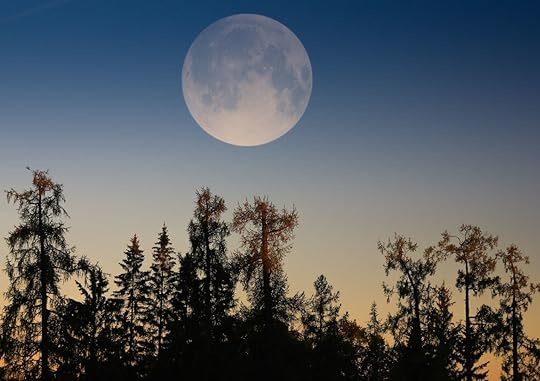
The last supermoon of the year is happening tomorrow, and hopefully, you’re an early riser. According to NASA, this full moon, also known as the Flower Moon, Corn Planting Moon, Milk Moon, and Vesak Festival Moon, will peak on the morning of May 7 at 6:45 AM ET. If you decide to sleep in, you can still catch it on Friday morning at around the same time.
A supermoon occurs when a new or full moon is at 90 percent of its perigee, which is the closest approach to Earth during its orbit. This makes the moon appear larger and brighter than it normally would. May’s supermoon won’t be quite as bright as April’s, but it will still look more impressive than a typical full moon.
The Flower Moon derives its name from the way Native Americans used to track the seasons, according to the Old Farmer’s Almanac. Since flower blooms are abundant in May, this month’s moon was named accordingly. Do not expect to glimpse any flowers sprouting from the moon’s surface.
The May supermoon is the last of a series of four supermoons this year with April being the brightest.
If you make the effort to wake up at 6:45 AM only to find clouds hanging above you, you can always check out the Virtual Telescope Project, which will be livestreaming the supermoon over Rome. The stream will take place on May 7 at 2:30 PM ET. 

More like this: 12 stargazing events you don’t want to miss in 2020
The post The last supermoon of the year will light up the sky tomorrow appeared first on Matador Network.
Selena Gomez cooking show on HBO Max

Former Disney star, certified pop phenomenon, and indie darling actress (she’s worked with Jim Jarmusch and Harmony Korine) is adding another accolade to her IMDB page: cooking show host. Yes, the multi-talented celebrity has officially signed on to host her own quarantine cooking with HBO Max.
According to Billboard, the 10-episode series was inspired by Gomez’s adventures in the kitchen while self-isolating. Here’s the twist: She might not actually be that good at cooking? HBO Max wrote in a press release that, “despite her many talents, it remains to be seen if cooking is one of them.”
Gomez added that she’s always been “very vocal” about her love for food and that if she could pick another career she’d be a chef. Though she has no formal training in the kitchen, she has found herself doing what millions of other Americans have done when boredom hits: Head to the kitchen and start experimenting with whatever is the fridge. Maybe she’ll even try to whip up a sourdough.
Of course, unlike millions of other Americans, she’ll have help from the best in the business. Each episode will feature what HBO Max calls a “master chef” who will tutor Gomez remotely as she cooks. Will goofy hijinks ensue as the pop star attempts to become an accomplished home cook, dealing with everything from “smoking ovens to missing ingredients,” along the way? It’s very likely.
So far those are the only details about the show we know, but it’s hard to tell if a cooking show hosted by a person who doesn’t really know how to cook will work. An essential ingredient to a really good cooking show is a talented chef who you can watch create art out of food. A singer burning toast while Gordon Ramsay yells at her from a Zoom call doesn’t exactly sound like tantalizing food television, but who knows — maybe there will be some unexpected comedy in Gomez’s cooking travails. HBO Max is set to launch on May 27. 

More like this: This flower arranging competition could be the next ‘Great British Bake Off’
The post Selena Gomez will host a quarantine-inspired cooking show appeared first on Matador Network.
Patagonia and Columbia on carbon

Patagonia and Columbia, both major retail operators in the outdoor space, are standing up to support a lawsuit brought against the Environmental Protection Agency by the American Lung Association and American Public Health Association in 2019.
The two iconic brands oppose a decision by the EPA to overturn the 2015 Clean Power Plan, which regulated greenhouse gas emissions. The EPA replaced the CPP with the Affordable Clean Energy Rule, but an Amicus Brief filed by Patagonia and Columbia says that the ACE isn’t strict enough in regulating emissions.
By filing a formal legal document, Patagonia and Columbia are advocating for the protection of our public lands for outdoor recreation rather than fossil fuel exploration and development. Specifically, the brief asks judges to all consider future impacts of overturning the CPP on the outdoors industry, an $887 billion economic goliath. Patagonia posted a summary of the brief, which is not yet scheduled for an oral hearing, to its Medium page in late April.
Businesses in the extraction industry stand to benefit immensely from the reduced emissions regulations proposed in the ACE, but Patagonia and Columbia insist that outdoor industry brands, their consumers, and the public at large will experience the opposite. According to the EPA’s own findings, an annual 1,400 premature deaths could stem from stripping away the CPP, due to the likely increase in carbon emissions resulting from increased fossil fuel development and use. Its argument also includes concerns regarding the use of public lands embraced by the outdoor community and the long-term threat posed by the impacts of climate change on our natural environment.
“From the perspective of thousands of US businesses that depend on a stable climate and wilderness preservation — including those, like amici [curiae Patagonia Works (Patagonia)], in the outdoor recreation industry — this is not an abstract concern,” the brands say in the brief, going on to explain that “the potential for economic disruption caused by climate change is already in focus and entirely predictable.”
The public can view other briefs and filings in the case via Climate Case Chart. No hearing date or response to the amicus brief has yet been announced. 

More like this: Chris Burkard shares rare images of Iceland’s glacial rivers in a stunning new book
The post Patagonia and Columbia unite to fight Trump on carbon emissions appeared first on Matador Network.
Frontier Airlines middle seat fee

The prospect of an empty middle seat in the post-pandemic era sounds appealing, but like all good things in life, it won’t come free. On Frontier Airlines, if you want to fly with an empty middle seat — whether for social-distancing purposes or just plain comfort — you’ll have to pay an extra fee.
The “More Room” seat assignment can be reserved via Frontier’s website for an extra $39 per passenger. Starting on May 8 and continuing through at least August 31, Frontier flights will have 18 “More Room” seats available per flight, which include stretch seats in the first three rows.
“While we believe the best measure to keep everyone healthy is to require face coverings,” said Frontier CEO Barry Biffle, “for those who want an empty seat next to them for extra peace of mind or simply additional comfort, we are now offering ‘More Room’.”
Indeed, the airline is also mandating face coverings for all passengers on board the aircraft, as well as at ticket counters and gate areas. Passengers will also be required to accept a health acknowledgment via the website or mobile app, certifying that neither they nor anyone in their household has shown coronavirus-related symptoms in the past 14 days.
For some, the peace of mind might be worth the cost. Others might prefer to make the gamble. Of course, you could always cross your fingers and hope the other passenger in your row paid the fee, so you don’t have to. 

More like this: Innovative new airplane seat designs will accommodate social distancing
The post Frontier Airlines is charging passengers extra to block off middle seats appeared first on Matador Network.
Climate change study on temperature

Climate change will hit more fiercely and quicker than expected, according to a new study from the Proceedings of the National Academy of Sciences, or PNAS. More than one billion people, and up to one-third of the world’s total population, could live in “insufferable heat” within 50 years. The study concluded that if emissions continue to worsen, areas where one-third of humanity lives will become as hot as the Sahara Desert.
The study approaches climate change from a unique angle. Instead of focusing on economic impacts or raw data as it applies to the planet as a whole, the authors instead looked at how warming temperatures could impact specific human habitat. India, for example, could have 1.2 billion people living in temperatures too hot for comfort, and 485 million Nigerians could face the same predicament.
“The numbers are flabbergasting. I literally did a double take when I first saw them, ” said Tim Lenton of Exeter University, one of the study’s authors, to The Guardian. “I’ve previously studied climate tipping points, which are usually considered apocalyptic. But this hit home harder. This puts the threat in very human terms.”
If these models were to come to fruition, the world would likely see mass migration and immense strain on its food systems. Given that future population growth is expected to center around areas of the world that are already particularly warm — parts of Africa and Asia — the percent of people living outside the “comfortable” zone with average temperatures between 43 and 82 degrees Fahrenheit is expected to increase. To slow the warming trend and avoid catastrophe, mankind needs to reduce dependence on fossil fuels and undergo massive efforts to remove greenhouse gases from the atmosphere. 

More like this: These elevated green spaces are the future of urban parks
The post New study predicts that one-third of humanity could live in ‘insufferable heat’ in 50 years appeared first on Matador Network.
Wild Sourdough Project

Many of us who’ve been sheltering at home have all picked up the same hobby: a newfound passion for different ways to get that bread. For the most adventurous, that means creating your own sourdough starter from the native yeasts floating around your place of residence. Now, researchers at North Carolina State University are asking for pieces of starter to help them understand how flour and geography impact wild sourdough.
The goal of the Wild Sourdough Project is to understand the bacteria and fungi that make sourdough taste different in each location. It’s based around a simple question: “How does the type of flour you use and where you live affect the success or failure of a wild sourdough starter?” Like with naturally fermented wine, how a wild sourdough bread tastes is shaped in a large part by the natural yeasts in the environment. With enough data points from people around the United States, the researchers could map the microbes that define the various bread terroirs around the country.
Every wild sourdough is different. There are more than 1,000 types of yeast, and only three strains (which all come from the same species, Saccharomyces cerevisiae) are used in commercial yeast. The microbes that kickstart a sourdough come from flour, water, the surrounding environment, and the person stirring the pot. Each place has a different colony of microbes that can populate the dough, meaning your kitchen has a different sourdough terroir than someone’s kitchen across the country. Hell, your kitchen has a different sourdough terroir than your window sill even. Yet, despite humans making sourdough for some 6,000 years, we know relatively little about the yeasts that make it possible.
The NCSU study will help researchers understand if the cliche “location, location, location” mantra matters as much to bread as it does to real estate.
Getting involved is simple: Create a wild sourdough starter with water and flour (the researchers list specific instructions for first-timers), observe and record its aroma and appearance over a couple of weeks, and then submit your data and send a sample to the Rob Dunn Lab at NCSU.
Even if aiding in the discovery of America’s bread terroir doesn’t excite you, it may still be worth participating. These researchers are among the few people left who actually care that you’re baking your own sourdough. 

More like this: Now’s the time to get really good at baking bread
The post What is American bread? Your sourdough starter could help scientists decide. appeared first on Matador Network.
Mountain bike trails by Sacramento
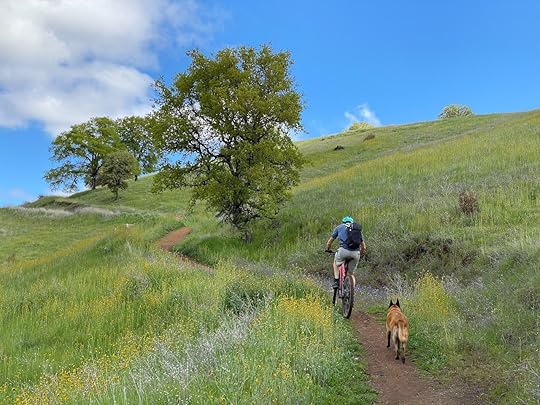
Sitting at the base of the Sierra Nevada foothills, California’s capital city of Sacramento provides access to hundreds of miles of single and doubletrack mountain bike terrain for riders of every ability. Easy trails along the river and canals can be found in the flat Sacramento valley while the foothills offer undulating flow trails for the more experienced mountain bikers. And those who really want to shred the gnar will find hair-raising downhills lined with rocks and roots.
The area is blowing up so quickly as a mountain bike destination that even Trailforks has to play catch-up to add all of the newly developed trails to its digital system. Add in the thriving food and beer scenes, and Sacramento makes a strong case for being NorCal’s most epic mountain bike destination. Here’s how to make the most out of your time here.
Stop into a bike shop for maps, conditions, and advice

Photo: Nomad_Soul/Shutterstock
Upon arriving in town, your first stop should be one of the local bike shops. Here you can get the lay of the land, including what’s on as far as trail conditions go. This is also the time to grab any gear you don’t have on you and rent a bike if necessary. In downtown Sacramento, check out Natomas Bike Shop for maintenance and equipment. The shop is an effective home for the local scene, with a staff of riders who spend ample time on local trails and are generally in the know regarding trail info. For those planning to ride the foothills or in need of a rental, stop by Folsom Bike.
Go for an easy pedal in the heart of the city
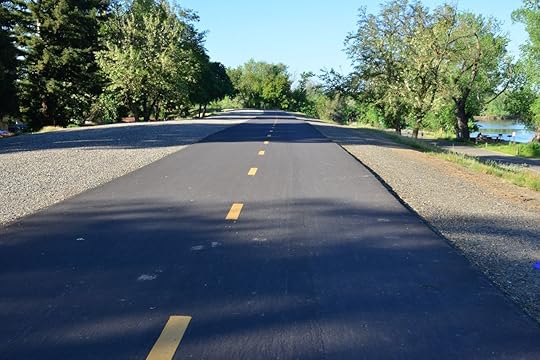
Photo: Paul Briden/Shutterstock
For an easy spin, Sacramento proper hosts the city’s famous Jedediah Smith Memorial Trail, a 32-mile paved trail that parallels the American River from Old Sacramento to Folsom Lake. This ride is worth checking out as a “welcome to town” excursion, not only for the scenery but also because of the stop at Tower Brewing near the end of the trail. Because it is a multi-purpose trail, it can become crowded with hikers, cyclists, and horses on weekends and holidays. Look for the singletrack offshoots along the trail to avoid crowds and score some mellow technical terrain. Ride the trail one way and hop on the train to return to downtown Sacramento or complete the loop and ride home on the other side of the river for a full 64-mile day. Aside from the Jedediah Smith Memorial Trail, an abundance of gravel canals located throughout downtown Sacramento and its outskirts make for an easy day out.
Keep the town itself in your plans even when riding the hills, however, because the city offers an apres-bike scene that makes Tahoe jealous, even if the diehards in Incline Village won’t admit it. The West Sacramento riverfront food and beer garden of Drake’s BARN serves up housemade beers and local food, including the best pizza on this side of town. For a midday break, Sunflower Drive-In is a local vegetarian favorite. Although they provide no meat or alcohol, the smoothies and nut burgers are worthy fuel for an afternoon ride. Finish the day with a pint at Samuel Horne’s Tavern in Old Folsom.
Practice technique around Folsom Lake
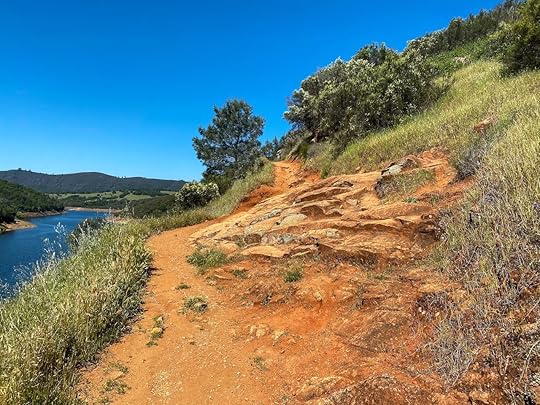
Photo: Lisa Parsons/Shutterstock
The west shore of Folsom Lake brings you to the Granite Bay trail network with pristine views of the lake from its nearby summits. Here you will find a mix of singletrack downhill and cross-country terrain, just a 30-minute drive northwest of the city. The sandy, cross-country terrain in Granite Bay is packed with mellow ascents that lead to fast and flowy downhills that often include short sections of rock gardens and a few larger granite drops. A good starting point is Granite Bay Trail, which will lead to many other lines — but watch out for signs that caution horse-only trails.
On the eastern side of Folsom Lake, a larger, varietal trail network sprawls across El Dorado County. Opt for Mitchell Trail with its velvety green rolling hills just off Highway 50 that overlook the city of Sacramento, or head toward the shore for the area’s classic, technical cross-country lines. For the budding mountain biker looking for a challenge, a great place to start is Darrington Trail. It’s a loop that will keep you on your toes in the rocks and will grant sweeping descents in return. For the more advanced rider who enjoys a pedal, opt for Skunk Hollow for steep and challenging ascents followed by fun, fast descents.
On the west side of Folsom Lake, head over to Final Gravity Taproom for a west coast craft beer after your ride. On the east side in El Dorado County, check out Mraz Brewing Company for a local brew and post-ride cooldown.
Freerides, shuttles, and fast downhills
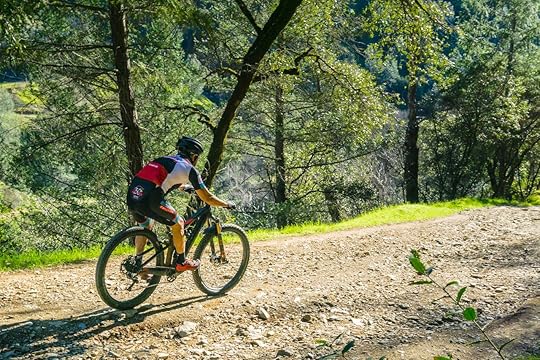
Photo: Dalton Johnson/Shutterstock
If you have the option to shuttle, Auburn State Recreation Area is the place for a solid group ride. Arguably the most sought-after downhill riding in close proximity to Sacramento, Auburn produces tight turns, technical rock gardens, sweeping berms, and fast, all-around-fun downhill riding. It’s set in the canyons of the North and Middle Forks of the American River, allowing for a quick swim after a long day of riding, a welcome treat in the warmer months.
For intermediate to advanced riders, Culvert Trail is the area’s must-ride path, with tall berms, fun jumps, and a couple of rock gardens. The Auburn State Recreation Area (ASRA) 7 Mile Loop includes Culvert Trail and is a great loop to get a feeling of the terrain in Auburn. Peddle laps on this loop or get some friends together to shuttle this mega-classic ride. For those looking for a more mellow day in Auburn, the Foresthill Divide trail is an 11-mile loop with easy ascents and fun flowing downhill.
Afterward, Ikeda’s is a local and tourist favorite. Make sure to try their famous chicken pot pie and marionberry pie for dessert. The next-door market offers single beers and other organic snacks.
Experience world-class riding within a two-hour drive of Sacramento

Photo: Northstar California Resort/Facebook
Some mountain bikers simply use Sacramento as a home base for big days in the nearby Sierra Nevada mountains. In Lake Tahoe, resort riders will find themselves at Northstar California Resort for an all-day shred session while backcountry riders can find anything from flat lake rides to advanced freeriding with mandatory drops, fun kickers, rock stairs, and the inevitable dodging of massive pine trees. Use Sacramento as a gateway to some of the world’s best mountain biking and come back at the end of the day to enjoy the friendly downtown with good food, beer, and people. 

More like this: How to pack for a successful mountain bike trip
The post Sacramento is NorCal’s booming new mountain bike hub appeared first on Matador Network.
Portland Naked Bike Ride 2020

COVID-19 has led to the cancelation or postponement of most of the world’s major events, but one event is still happening right on schedule: the World Naked Bike Ride in Portland, Oregon. Although cities like St. Louis, London, and San Francisco canceled the event, Portland, Oregon, is insisting that it still takes place on June 27. But it’ll look a little different this year.
Usually, naked bikers gather at a set time and location. This year, however, participants are being encouraged to strip down and ride wherever they want, whenever they want. So, while the riders won’t all be riding together, they’ll still be riding nude around the city of Portland — only separately, so Portlanders shouldn’t be surprised to see the occasional solo nude biker out and about.
Pedalpalooza, the organization that oversees the event, said, “It might take even more courage than usual, but if any city has the creativity to make it fun, it’s Portland.” On Facebook, it added, “We simply must put the safety of Portlanders first.”
The event’s goal is to call attention to society’s dependence on pollution-based transport, as well as promote body positivity and cyclist safety. Last year, the ride drew 10,000 participants. Due to these large numbers, it’s clear that holding the event in the traditional fashion would be a violation of social-distancing regulations. The new format might be a departure from the familiar, but with so many determined cyclists around Portland, it’s bound to be a success no matter the format. 

More like this: The 7 most epic bike tours around the world
The post This year’s Naked Bike Ride in Portland will be pandemic-proof appeared first on Matador Network.
May 5, 2020
Denver Zoo baby rhino cam

The best part about working from home is that you can spend two hours watching a live baby rhino cam, and no one can call you out on it. The Denver Zoo just released a livestream of a baby rhino, and it’s easily the best excuse to take a suspiciously long lunch break.
“You asked and we listened!” said the zoo. “We now have a Baby Rhino Live Cam up and running. You can enjoy our greater one-horned bundle of joy right here.”
View this post on InstagramA post shared by Denver Zoo (@denverzoo) on Feb 26, 2020 at 9:24am PST
The rhino calf is named Joona and can be seen every day hanging out with her mom, Tensing, inside their bedroom. As the weather warms up, however, Joona is expected to venture outside more frequently, so if you tune in and don’t see her, don’t worry. She’s just catching some rays.
Today's #bringingthezootoyou Virtual Safari is brought to you by the cutest greater one-horned rhino gal! Tune on Facebook in at 2 p.m. MDT today (because baby takes her daily nap at 1 p.m.), or check out https://t.co/SrPiKSreHq for the replay! #ClosedButStillCaring pic.twitter.com/tcIyPNy1MS
— Denver Zoo (@DenverZoo) March 25, 2020
Joona is a greater one-horned rhino born in captivity from 13-year-old Tensing on February 22, 2020. The greater one-horned rhino is found in Northern India and Southern Nepal, but there are only about 3,500 individuals in the wild. The species is listed as vulnerable by the World Wildlife Foundation.
In addition to Joona’s live stream, the zoo also offers a virtual safari program featuring videos of other animals, from Humboldt penguins to Vietnamese potbelly pigs, in an attempt to stay connected with the community.
In a news release, the Denver Zoo said, “The Zoo is reaching out to the community with a new resource to help families stay connected to its animals and stave off cabin fever during this difficult time. Zoo to You: Virtual Safari will be updated daily with new animal videos, wildlife-themed activities, and other ideas that families can do at home.” 

More like this: Botswana is evacuating its endangered black rhinos to save them from poachers
The post The Denver Zoo’s baby rhino cam is the most adorable thing you’ll see today appeared first on Matador Network.
Virtual tour of Wuhan, China

Few Americans might have been aware that Wuhan, China, is known as “The Chicago of the East” before the first half of 2020. Now it’s the most talked-about city on Earth, and there’s a growing interest in understanding more about Wuhan and how people live there, both before the pandemic hit and now that quarantine restrictions have relaxed.
Of course, going there to find out isn’t realistic right now, but a chance to learn about Wuhan — from a local — seemed enticing enough to try out one of many virtual tours being offered now that physical travel is off the table.
So I joined a group of 50 people with Walks — a walking tour company that typically runs tours in cities around the world — for an hour trip through Wuhan. Our guide for this journey was Zhou Akim, an English teacher enrolled at the University of Sydney who, when she’s not in school, calls this city on the Yangtze River home.
Her hour-long slide presentation was both fascinating and somehow calming. Over the course of her virtual tour, Akim showed us that Wuhan is a massive, modern city full of people who do everything outdoors — from drinking tea to conducting business — and prefer noodles for breakfast.
Glass towers and golden pagodas mark a modern skyline

Photo: livingmaster/Shutterstock
From the start, we got an idea of how truly big Wuhan is — five times the size of London — with a population of around 11 million. The skyline is an impressive lineup of glass towers, centered by the Tortoise Mountain TV tower, making it look almost like a smaller version of Shanghai. Between the modern skyline and the city’s historic landmark Yellow Crane Tower flows the Yangtze River, which glittered bright blue against the green trees on either side.
Akim led us over the Yangtze River bridge, the city’s main bridge, which supports both cars and rail. “The local legend says that if you walk across the bridge with someone special, you find love forever,” she said.

Photo: vivienniu/Shutterstock
From the bridge, we continued across to the Wuchang district of the city (it was once three separate towns separated by rivers) and Wuhan’s most famous structure, the Yellow Crane Tower.
“According to legend, it began with a wine store owner,” she said of the glorious golden pagoda, which has stood in some form for 1,800 years. “One day a beggar came to the store and asked for drinks, and the owner’s son was a generous man and gave the beggar food and wine. One day the beggar decided to repay his kindness and drew a crane on the wall of the store. The crane was a magic crane that danced on the wall. People came to see it, and the family grew rich and built the tower in the spirit of kindness.”
She then told us that, in truth, the Yellow Crane Tower was actually built as a military watchtower, but it was a nice piece of local flavor and legend — the story you’re looking for when you’re traveling to a new place.
An outdoor culture forced inside

Photo: Hao Wan/Shutterstock
Akim then led us out of town to Mulan Mountain, named after the female military hero who most Westerners will know from the Disney movie of the same name. Akin filled us in on Mulan’s backstory (she dressed as a man to fight in the army), and we also learned that the actress depicting Mulan in the upcoming live-action film hails from Wuhan.
Akim also used the opportunity to tell us about the outdoors spirit of the city. Many residents of Wuhan flock out of the city to hike around the mountain and even prefer to be outside once they’re back in town.
After that, she led us through the Hankou district, “the most amazing place in Wuhan, and also where I live.”
We saw photos of the bustling outdoor antique market where people buy cookware, jade, books, and other household goods. We saw food markets in the open air, similar to those you might find in other places in Asia, like Thailand or Indonesia.
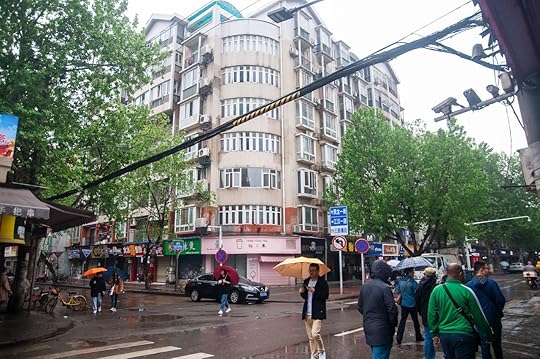
Photo: ellinnur bakarudin/Shutterstock
“People live kind of an old-fashioned lifestyle here,” Akim said, sharing that most people prefer shopping in these outdoor markets than grocery stores.
Next, we learned of Wuhan’s breakfast culture and how in this city breakfast is traditionally a meal eaten outside, often at one of the hundreds of tiny breakfast vendors.
“You find a chair to sit in, then you find a larger chair, and that’s your table,” she said, showing images of people enjoying breakfast in alleys between apartment buildings, on pedestrian streets, and in front of breakfast shops. It seems clear that most people in Wuhan are eager to get back to the city’s bustling café culture.
Food and tea center daily lives

Photo: Robert Way/Shutterstock
“There are 30 different kinds of breakfast you can have in Wuhan,” Akim said proudly. “That means you can go a month without repeating your breakfast.”
The traditional breakfast foods she showed us are all part of China’s rich culinary heritage: Bean curd, rice cakes, rice wine with eggs, and the famous hot dry noodles.
Lunch was an equally eye-opening experience, with a slide of delicacies like pig knuckle stew, Wuchang fish, duck neck, and steamed pork with rice flour filling our screens.
Barbecue is the most popular food in Wuhan, with stalls lining the streets grilling mostly lamb but also some tofu and vegetables. The style was brought there from the nomads of inner Mongolia who migrated to east-central inland China. It’s become a regional staple here much the same way it would be in Memphis or Kansas City.

Photo: Andrew Babble/Shutterstock
We also learned about the ubiquitous lotus root, the foundational starch in most Wuhanese cuisine. Lotus and rib soup is Wuhan’s local stew, and lotus root soup is the steaming cure-all for whatever ails you. For dessert, Wuhan specializes in a steamed pumpkin rice cake, which has a slightly sour taste.
“My mom was watching TV with me one day while I was babysitting my nephew,” Akim told us. “And she pointed to the screen and said ‘What is that cartoon you’re watching with the steaming rice cake who can talk?’ I said ‘You mean Spongebob?’”
From there we ventured into Wuhan’s maze of tea houses and tea markets, a family business for our guide and a cultural institution. We saw images of people sipping tea and playing mahjong in the shops, some of them clearly European or American laughing and smiling like they were on the deck of a cruise ship.
“People come to the tea market and sit outside,” she said, elaborating on the city’s obsession with the outdoors. “We even do business outside. These people might be having a business meeting. In Wuhan if we can do something outside, we do it outside.”
A dose of local culture and a look at the road back
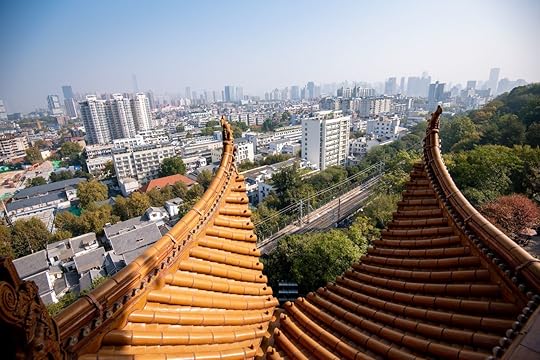
Photo: KernelNguyen/Shutterstock
Finally, Akim hipped us to a few local colloquialisms and language nuances.
“People say our dialect sounds grumpy or rude,” she said of the local language. “But that’s not what it’s meant to be. It’s just how we talk.”
She said that people in Wuhan sometimes fight over restaurant checks as a sign of love and admiration for friends and family, and warned us that the local word for zebra — gebama — also borders on profanity.
Finally, we saw some images of life in Wuhan during the outbreak. Akim had been a volunteer during the height of the pandemic, delivering groceries to people, and we saw how she — and others in similar positions — wore white hazmat suits to go about their daily business.
“I remember the first day I went to work, the whole neighborhood was empty, no one walked the streets,” she said. “And the only ones I saw were wearing white protective suits and police.”
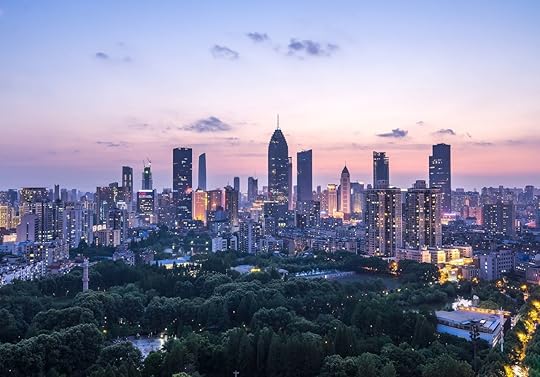
Photo: sleepingpanda/Shutterstock
Since April 10, she said, the city has started to slowly return to normal. She showed us a video of the streets, which weren’t totally empty but not how one would imagine a city of 11 million people to look either.
“People are starting to eat breakfast again,” she said hopefully. “But everyone needs to be patient.”
Though our trip through Wuhan was limited to photographs and the words of a local guide, it still gave us a look into a city that’s somehow dominated the news without telling us anything about the place itself. The virtual tour showed us all that Wuhan is a city in which tradition meets technology, where people love to go hiking and take breakfast very seriously.
Walks has two more virtual tours this month — Thursday, May 7, and again on May 14. And if you’d like a virtual tour that sheds some serious light on a place it’s worth getting to know since it became famous, it’s worth the 10 bucks and hour of your time. 

More like this: In Wuhan, hot dry noodle vendors reopening is a welcome sign of normalcy
The post I took a virtual tour of Wuhan, and it showed a side of the city the news misses appeared first on Matador Network.
Matador Network's Blog
- Matador Network's profile
- 6 followers



